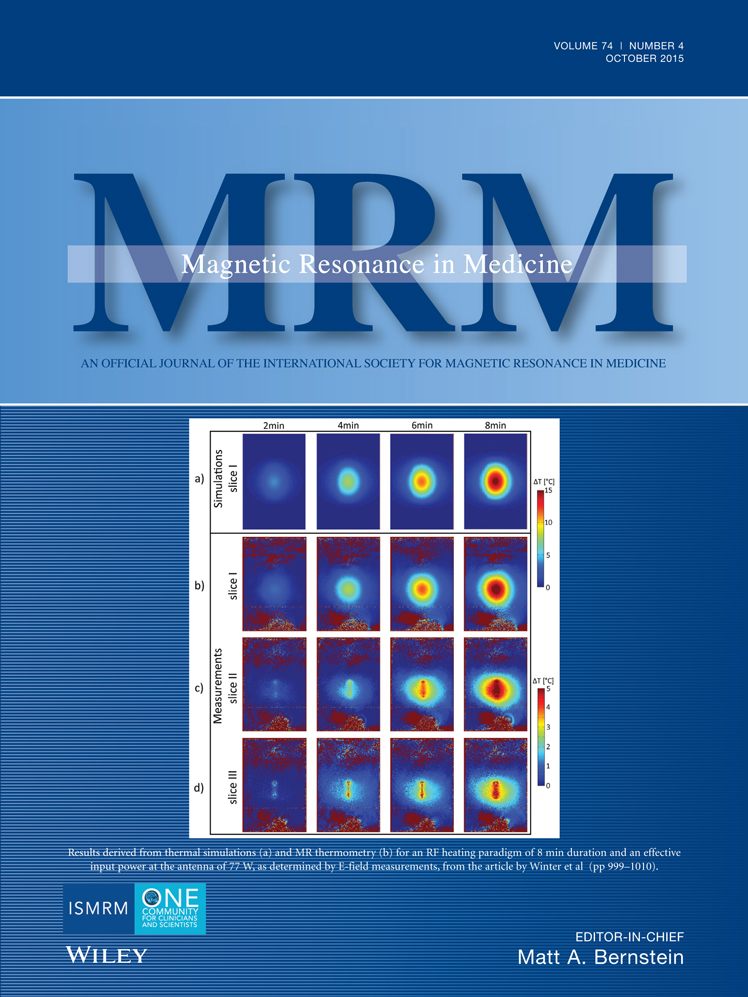Myocardial perfusion assessment in humans using steady-pulsed arterial spin labeling
Abstract
Purpose
Although arterial spin labeling (ASL) has become a routinely performed method in the rodent heart, its application to the human heart remains challenged by low tissue blood flow and cardiac and respiratory motion. We hypothesized that an alternative steady-pulsed ASL (spASL) method would provide more efficient perfusion signal averaging by driving the tissue magnetization into a perfusion-dependent steady state.
Methods
We evaluated the feasibility of spASL in the human heart by combining pulsed labeling in the aortic root with a balanced steady state free precession sequence. The spASL scheme was applied to 13 subjects under free breathing. Breathing motion was addressed using retrospective image exclusion based on a contour-based cross-correlation algorithm.
Results
The measured signal with spASL was due to labeled blood. We found that the perfusion signal was larger than that obtained with the earlier flow-sensitive alternating inversion recovery (FAIR) method. Averaged myocardial blood flow (MBF) over four myocardial regions was 1.28 ± 0.36 mL·g−1·min−1.
Conclusion
spASL was able to quantify MBF in healthy subjects under free breathing. Because quantification with ASL is more direct than with first-pass perfusion MRI, it appears particularly suited for pathologies with diffuse microvascular alterations, MBF reserve, and follow-up studies. Magn Reson Med 74:990–998, 2015. © 2014 Wiley Periodicals, Inc.




